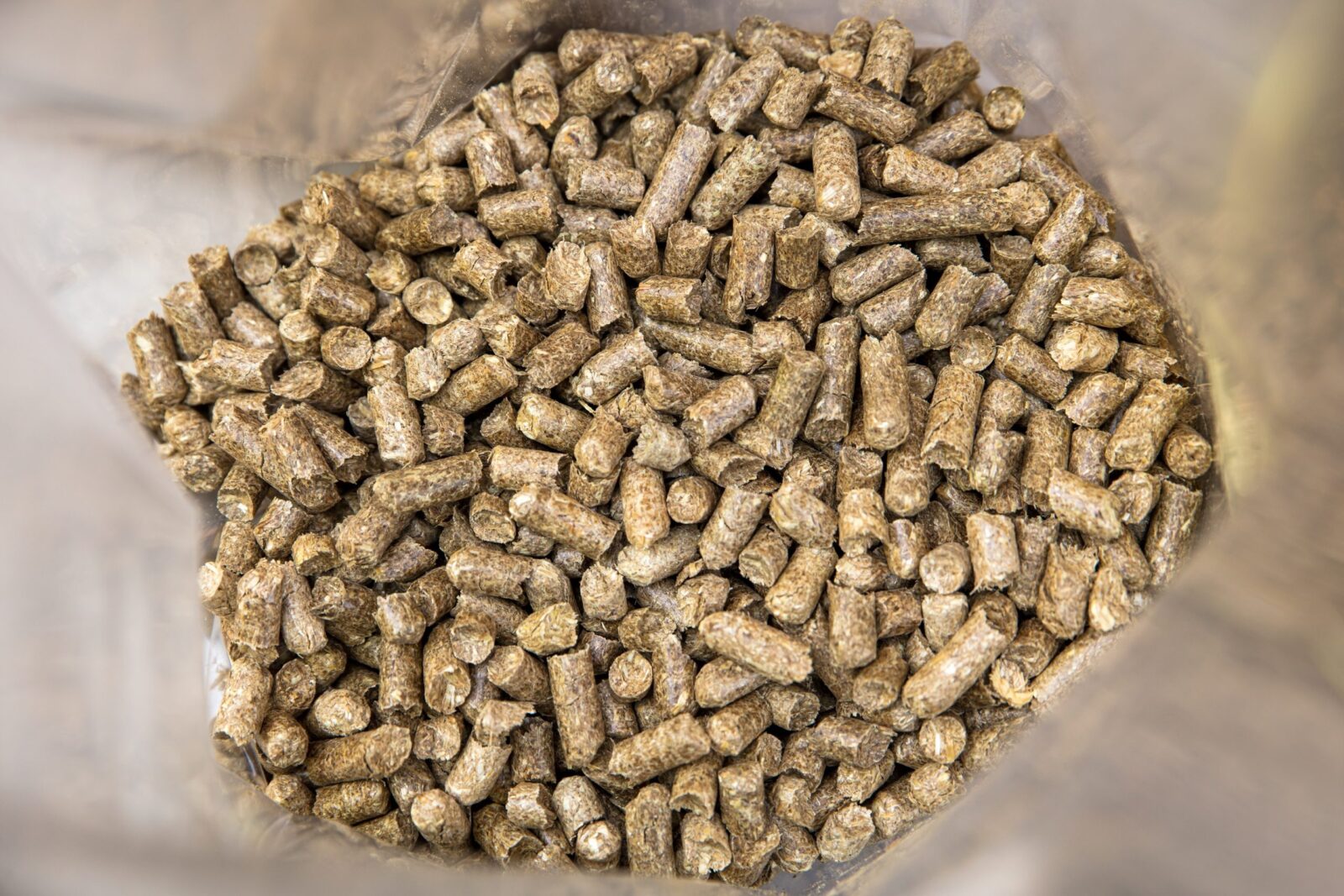Straw pellets
Straw pellets are commonly used overseas in biomass feedstock for heat and power applications. They are made from cereal crop residues that have been pelletised, including wheat, barley, rye, rice, oats and soybean straws. The process usually requires straw to be crushed, dried to 13–15% moisture and cut into 4–5 mm lengths before it is pressed into pellets under pressure of between 115–300 MPa and a temperature of 100–130 °C in a straw pellet miller. The heat treatment reduces the microbial load, and both the temperature and pressure applied in the pelletisation process influence the durability of the pellets and their physical characteristics.
In Australia, straw pellets are used for equine and small animal bedding and a significant portion of straw pellets produced in Australia are exported.
Application in the Australian chicken meat industry
Internationally, straw pellets are used as alternative litter material. Once straw pellets are placed in sheds, the pellets gradually break down into absorbent fibrous bedding. Straw pellets are more absorbent, can last longer, cake less than chopped straw and are usually less dusty than other litters. However, this depends on the manufacturing process and the portion of fines used in the production of pellets, which varies between pellet manufacturers.
Practical considerations of using straw pellets as chicken litter
Practical considerations that need to be assessed before using straw pellets as litter in the Australian chicken meat industry include:
[table “118” not found /]Content source: Review of fresh litter supply, management and spent litter utilisation, AgriFutures Australia final report 2018
Downloads and resources
Best practice litter management manual for Australian chicken meat farms (PDF, 3MB) | online version
Review of fresh litter supply, management and spent litter utilisation (PDF, 3.5MB)
Litter re-use: an evidence-based guide to re-using litter (PDF, 1.3MB)
References
Abreu, V. M. N., Abreu, P. D., Paiva, D. P., Coldebella, A., Jaenisch, F. R. F., Cestonaro, T. and Silva, V. S. (2013) Evaluation of soybean straw as litter material in poultry production and substrate in composting of broiler carcasses, Soybean: bio-active compounds. Intech. Available from https://ainfo.cnptia.embrapa.br/digital/bitstream/item/96714/1/6886.pdf
Adapa, P., Tabil, L., Schoenau, G. and Opoku, A. (2010) Pelleting characteristics of selected biomass with and without steam explosion pretreatment, International Journal of Agricultural and Biological Engineering, 3(3), pp. 62-79. DOI 10.3965/j.issn.1934-6344.2010.03.062-079
KMEC Engineering (2018) Straw pellet machine for sale and pellet plant manufacturer. Available from http://www.biomasspelletplant.com/news/Straw-Pellet-Machine.html
Kosanović, A. R. (2015) Wheat straw pellets increase poultry production by 20%, LinkedIn. Available from https://www.linkedin.com/pulse/wheat-straw-pellets-increase-poultry-production-20-radukin-kosanovi%C4%87
Slobodzian–Ksenicz, O. and Kuczynski, T. (2002) Effect of litter type on ammonia emission in turkey housing, Agricultural Engineering International: the CIGR Journal of Scientific Research and Development. Manuscript BC 01 006. Vol. 4. Available from https://ecommons.cornell.edu/handle/1813/10267
STRAWCOMFORT (2016), Superior Straw Pellets, AT energy, Lithuania. Available from http://www.strawcomfort.lt/en/
Whittaker, C. and Shield, I. (2017) Factors affecting wood, energy grass and straw pellet durability: a review, Renewable and Sustainable Energy Reviews, 71, pp. 1-11. Available from https://doi.org/10.1016/j.rser.2016.12.119


